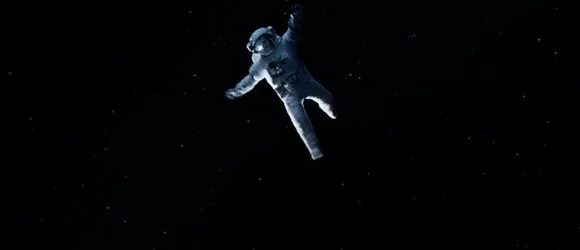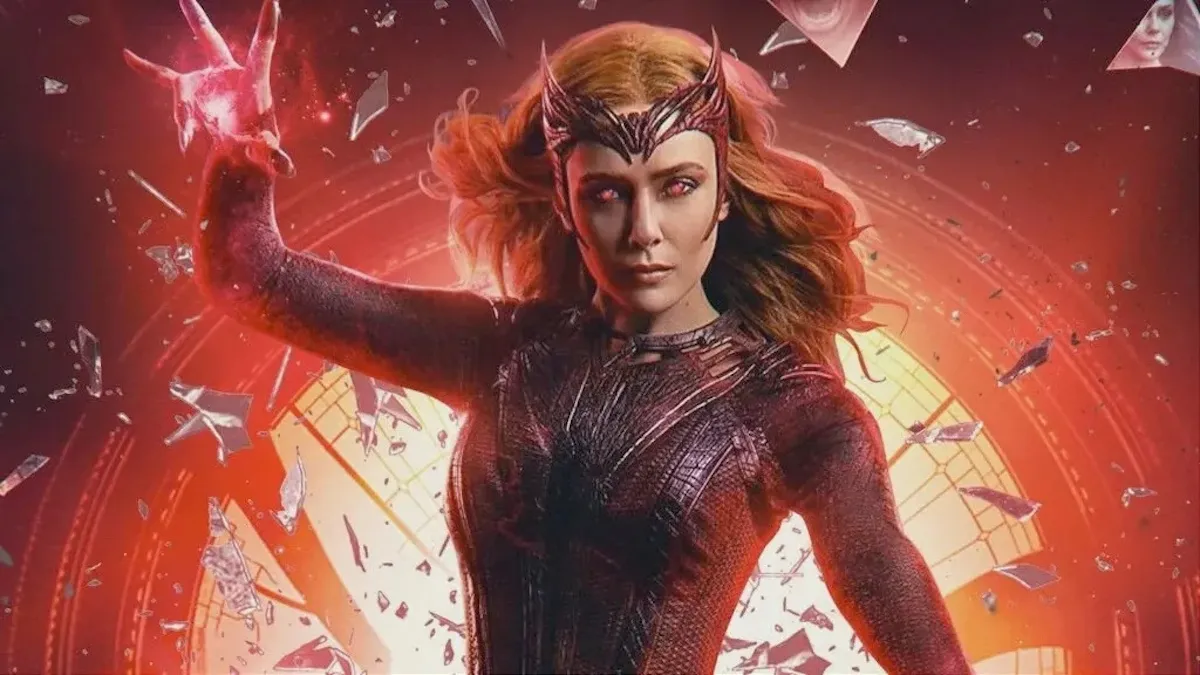Alfonso Cuarón’s ambitious Gravity does not need monsters, aliens, or traitorous humans to strike fear into viewers looking out at the empty black night. All that is required is the silent, lonely expanse of space itself; airless, without aid, and full of its own ethereal beauty. Perhaps the most intense 90 minutes I’ve spent in a theater this year, Gravity presents space itself as the true horror, a place where indifferent forces collide to spell catastrophe for any humans unlucky enough to be in their path. Despite a tendency to become overwhelmed in places by its own sentimentality (or simply by the soundtrack) Gravity is a taunt, breathtakingly arranged film that will likely leave you on the edge of your seat.
Gravity begins with a ballet of motion, as we’re introduced to Ryan Stone (Sandra Bullock), Matt Kowalski (George Clooney), and their crew of NASA specialists high above the atmosphere while they tinker with the Hubble telescope. In the first uncut 13 minutes – managed digitally, but impressive nonetheless – our astronauts receive word that a Russian satellite has exploded, creating a debris field that’s headed their way at hundreds of miles per hour. The satellite has also knocked out others around it, causing an imminent communications blackout. Calm routine turns into panicked chaos as the debris hits, destroying their shuttle, killing the rest of the crew, and setting Stone adrift with a low tank of oxygen and no tether. Kowalski manages to get to her, but the two are stranded, and need to get to the International Space Station to use an evacuation pod, all before the debris field makes it around the earth in 90 minutes of their time.
Cuarón keeps Gravity strung tight through his customary use of long, sustained shots. With few cutaways from the action and a virtual absence of other cinematic language, it’s easy to forget that you’re watching a movie. Even though the debris circles around twice more, clocking the time of the film’s action around four hours, the film’s lengthy shots cause you to feel as though it’s unfolding in real time, heightening the sense of immediacy and peril. The filmmakers also employ what I came to think of as “helmet cam,” a direct POV type of shot where the audience can see every labored breath fogging the glass and experience the character’s dread firsthand.
The film is one of contrasts; beauty and terror, immense spaces and cramped, claustrophobic ones, thunderous noise and deafening silence. With impressive effects shots of everything from the Aurora creeping over the Earth, to the strange, destructive beauty of spacecraft being torn apart, Cuarón and his team of animators are obvious masters of imagery. This can sometimes be to their detriment: a shot of Bullock in the fetal position, framed by an airlock and replete with umbilical-like tubing behind her, is too on the nose.
So, beauty is not without its imperfections. At times, the plot can feel like a laundry list of what can go wrong, rather than a well-paced series of events. As was pointed out by my viewing companion, the film has everyone’s phobias covered, from claustrophobia to agoraphobia, fire to asphyxiation. A lot gets crammed into the film’s trim, 90-minute running time, including plenty of opportunities for Bullock to show her expressive ‘what fresh hell is THIS’ face. Most jarringly, there are some serious liberties taken with physics that are obvious even to those among us without degrees in the subject, and taken at important moments. At one point, a character is pulled away not so much by any actual force affecting his body, but seemingly by the needs of the plot.
However, it’s easy to be forgiving of Gravity’s missteps when the meat of the film is so remarkably, wonderfully stark. For the majority of the running time, it’s only Bullock and the audience, cut off from Earth and any help, confronting whatever new problem lies ahead with fear, apprehension, relief, and small moments of triumph. Despite its initial appearance to the contrary in its trailers, the film is not about Clooney rescuing Bullock, but, rather, about Bullock rescuing herself. Gravity featuring a multi-faceted woman as its central figure was a feature that both surprised, and, in turn, made me interested as to just why I was surprised. Given the recent poor run of female characters on the silver screen, for Gravity to have a heroic, survivalist female protagonist is near extraordinary. In every way save for one, Bullock’s Stone is analogous to any male counterpart who might have inhabited the same role, a neutrality appropriate for the setting.
Yet the film takes an odd approach at its lowest point, before Bullock’s character rallies for the third act, that would not have been handled the same way had a man been cast as Stone. Early on, Stone mentions her young daughter’s accidental death, the talk is matter-of-fact, yet imbued with the tragedy of such an event. Even while running perilously low on oxygen, Stone is a sober, sad woman, hardly indifferent to what is happening, but not overtly sentimental, either. However, later, when faced yet again with the very real possibility of her own death, Stone accidentally picks up on a radio signal from Earth, and hearing a baby in the background, begins to cry. It’s not the crying that’s objectionable; I dare anyone to assume they wouldn’t be doing the same. But the overblown reminders of Stone’s maternal turn gone awry were unnecessary in a film that could have gotten by on much subtler touches. These swells of sentimentality are not helped by Steven Price’s bombastic, mostly background score, which leaps to the forefront at inappropriate moments to remind us that what we are seeing is dramatic, as though we did not know.
Though it has its inconsistencies and weak writing moments, Gravity is a solid, gorgeous piece of filmmaking that doesn’t let up the tension, even for a second. The technical mastery, and beautifully choreographed sequences, some terrible, some soothing, create a remarkable viewing experience that sticks in the mind. Moreover, the film is anchored by strong performances from Bullock and Clooney, with Bullock in particular visiting every conceivable emotion onscreen in what must have been excruciatingly long takes. For those looking for an intense, memorable cinematic experience, Gravity might be just the thing.









Published: Oct 7, 2013 12:34 pm